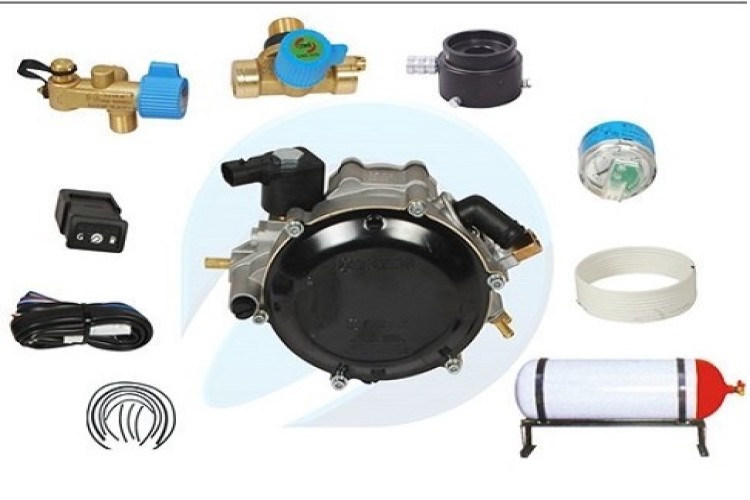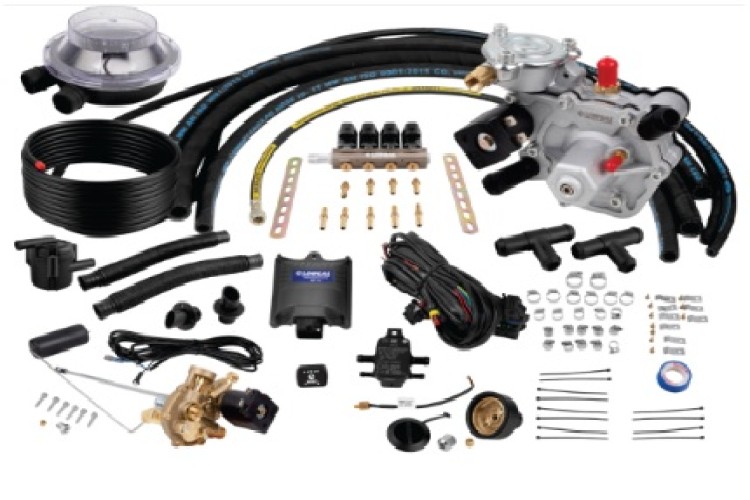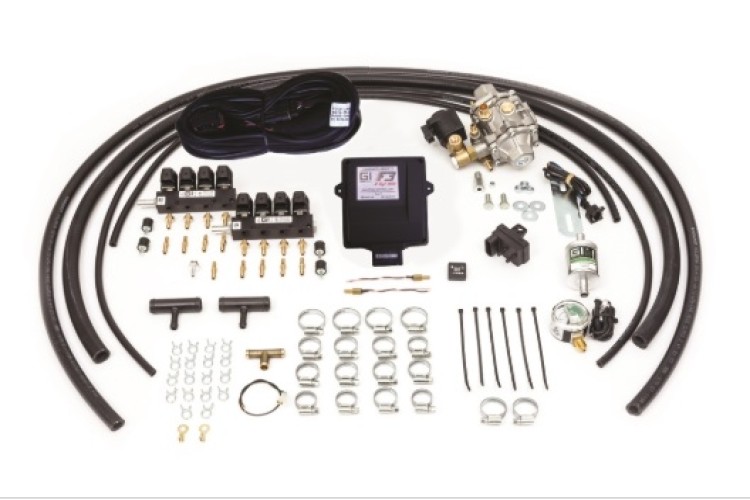
TRADITIONAL CNG KIT
A Traditional / Mixer-Type CNG Conversion Kit is an older but simpler system that uses a carburetor-like mixer to introduce CNG into the engine’s intake air. Unlike sequential injection, it does not have individual gas injectors but relies on vacuum and pressure regulation. Below is a detailed list of components:
1. CNG Cylinder (Tank)
- High-pressure storage tank (usually Type 1 or Type 3).
- Rated for 200–250 bar working pressure.
- Made of steel (heavy) or composite (lighter).
2. CNG Multivalve (Cylinder Valve)
- Includes:
- Manual shut-off valve (for emergency gas cutoff).
- Pressure relief device (PRD) (safety against overpressure).
- Fill and discharge ports.
- Thermal fuse (closes valve in case of fire).
3. High-Pressure CNG Regulator (1st Stage)
- Reduces pressure from 200–250 bar to 4–10 bar.
- Often includes a coarse filter to remove debris.
4. Low-Pressure CNG Regulator (2nd Stage)
- Further reduces pressure to near-atmospheric (suitable for mixer).
- Uses engine coolant to prevent freezing (due to gas expansion).
5. Gas/Air Mixer (Venturi Mixer)
- The key component of a mixer-type system.
- Installed between the air filter and throttle body.
- Uses vacuum to draw CNG into the airstream (like a carburetor).
6. Power Valve (Demand Regulator)
- Adjusts gas flow based on engine vacuum.
- Works with the mixer to maintain the correct air-fuel ratio.
7. Petrol Lock-Off Valve (Solenoid)
- Cuts off petrol supply when running on CNG.
- Prevents fuel mixing.
8. CNG Lock-Off Valve (Solenoid)
- Electrically controlled valve that shuts off CNG when:
- The engine is off.
- Running on petrol.
- In case of a fault.
9. CNG Filling Valve (Refueling Receptacle)
- High-pressure connector for CNG refueling.
- Usually mounted near the petrol filler or bumper.
10. Manual Shut-Off Valve
- Allows manual gas cutoff (for maintenance/safety).
11. Pressure Gauges (Optional)
- Displays tank pressure (indicates remaining CNG).
12. CNG Filter
- Removes oil, dust, and impurities before the gas enters the mixer.
- Usually placed after the high-pressure regulator.
13. Fuel Selection Switch
- Allows driver to switch between Petrol and CNG.
- May include a basic CNG level indicator (pressure-based).
14. Vacuum/Pressure Hoses
- Connects regulators, mixer, and intake manifold.
- Must be CNG-resistant.
15. Emulator (For Fuel-Injected Engines)
- Tricks the petrol ECU into thinking petrol injectors are working.
- Prevents error codes when running on CNG.
16. Idle Speed Controller (If Needed)
- Adjusts idle speed when running on CNG (since mixer systems can affect idle stability).
A traditional or mixture system CNG (Compressed Natural Gas) conversion kit is a basic type of conversion system used to allow petrol engines to run on CNG. In this setup, CNG is mixed with air before entering the engine through a mixer installed in the intake manifold, similar to the carburetor function in older petrol engines. The gas flow is controlled mechanically using a reducer (pressure regulator) and a manual or simple electronic switch to toggle between petrol and CNG modes. This system lacks the precision of sequential kits, resulting in less efficient fuel combustion, slightly lower engine performance, and increased emissions. However, mixture-type CNG kits are more affordable and easier to install, making them a suitable choice for older, carburetor-based vehicles.




